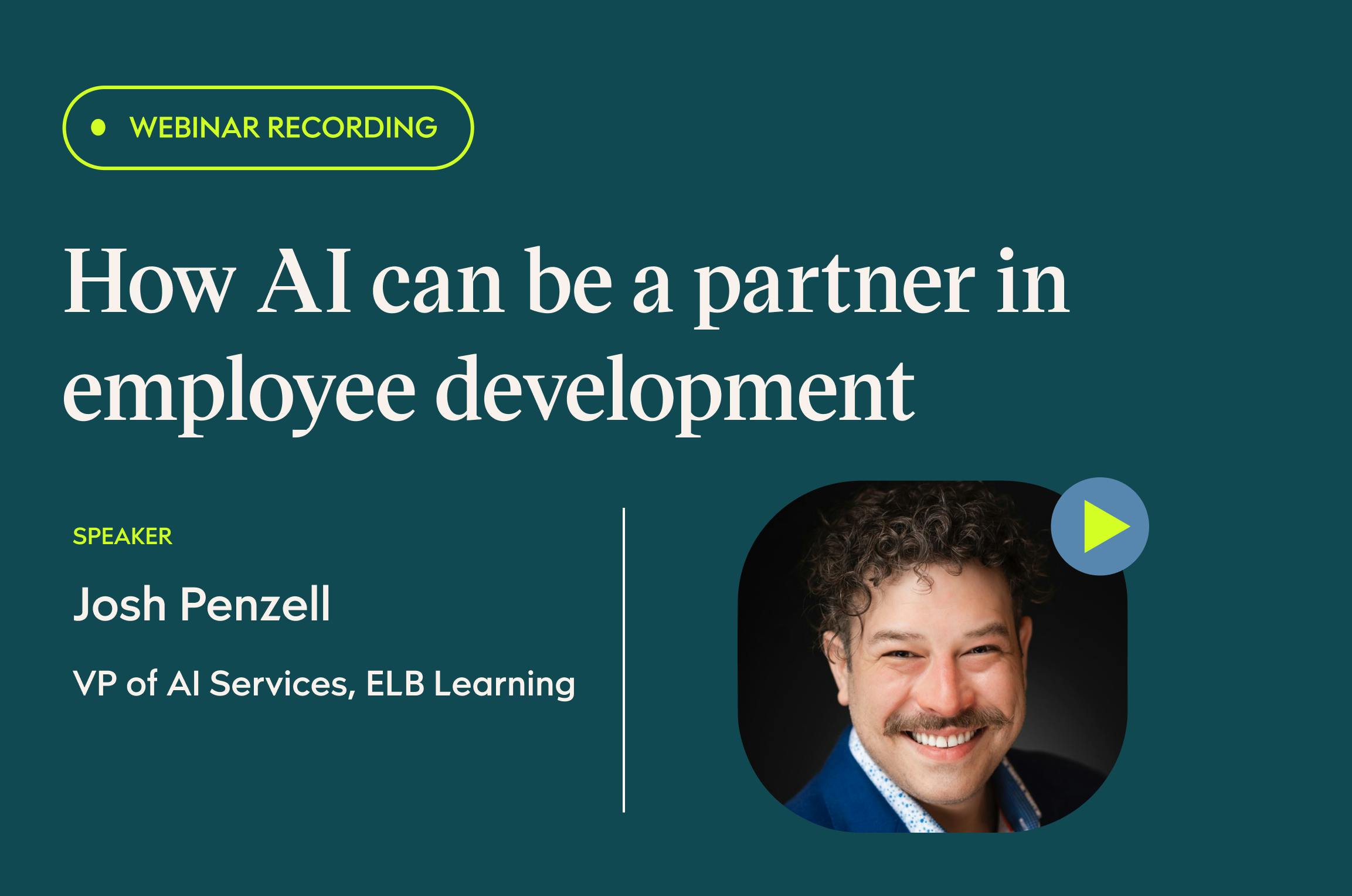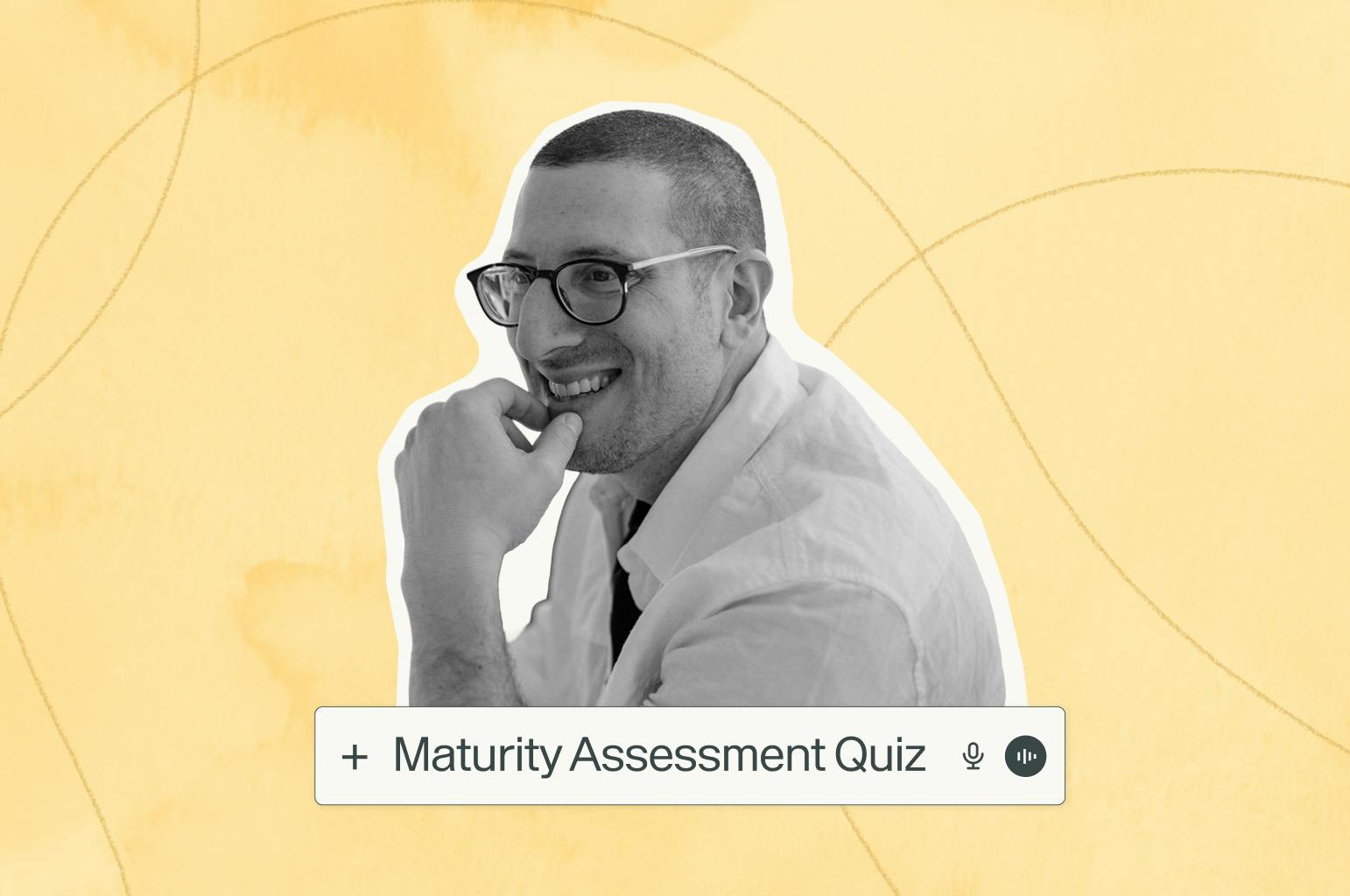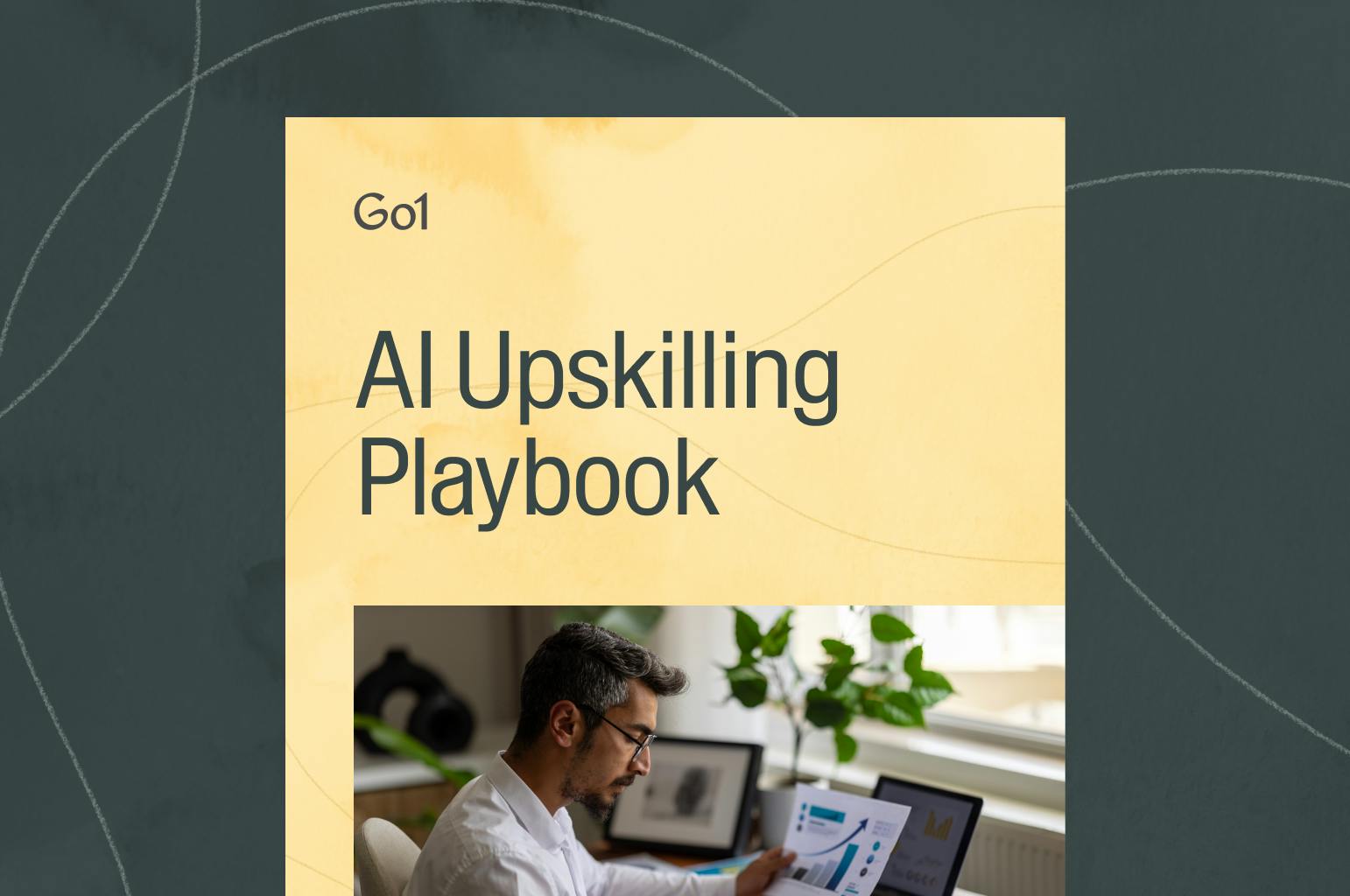How AI can be a partner in employee development

AI is more than a tool — it's a new team member
Josh Penzell, VP of AI Strategy & Innovation at ELB Learning, is encouraging everyone to shift their perspective on AI. Rather than treating it as a tool, he proposes that AI should be seen as a new team member. This perspective change could lead to more effective utilization of AI and open up new possibilities for its application. He went into detail on what this could look like for leaders in the learning and development space in our recent webinar, How AI can be a partner in employee development. (You can watch the recording at the end of this article).
"AI is not just a new tool. AI is your new team member," stated Penzell. He argued that AI is capable of operating more like a partner or colleague than a tool, providing insights and identifying patterns that a human might overlook.
This shift in perspective can help alleviate fears and concerns about AI taking over jobs and replacing human workers. Instead, AI can be seen as a valuable asset that can enhance human capabilities and improve overall efficiency and productivity. By viewing AI as a team member, businesses and organizations can foster a collaborative environment where humans and AI work together towards a common goal. This can lead to innovative solutions and advancements in various industries, from healthcare to finance to manufacturing.
"I think that the future here is every single individual being able to hire and create their own team at scale. And I want you to think about this. You have something that is behaving like a human. It has the whole human knowledge," Josh urged the audience. This more strategic view of what AI brings can completely change an individual's day-to-day efficiency with some prompt engineering and upskilling around AI.
By working alongside AI, individuals can learn new skills and improve their own abilities, leading to personal and professional growth. Humans can tap into new capabilities and use it as a tool to tackle complex problems and create innovative solutions. It's an always-on brainstormer and teammate that you can train to respond in a way that fits your role, expected outcome, or business. With the combination of human creativity and AI's analytical abilities, the possibilities for progress are endless. But it's on the individual to embrace the technology and use it ethically to enhance, not hurt.
Enhancing productivity and employee engagement with AI
Josh Penzell explained that AI doesn't necessarily mean job loss. Instead, AI can increase productivity by taking over automatable and mundane tasks that can bog down a day's work. Statistically, employees who use AI are more engaged and motivated, which ultimately boosts their creativity. Because when AI can handle mundane and repetitive tasks, employees have more free time to focus on the challenging and engaging work.
"According to McKinsey, only 5% of jobs can be fully automated. But 60% of jobs have 30% of automatable tasks, meaning that those are easy things for us to let AI do for us," explained Penzell. This means that while AI may be able to take over some tasks, it's not there to take over your job.

The future of AI lies in metacognition
The ability to think about and understand one's own thought processes can really up the ante on how the way we use AI for learning and development.
This means that instead of simply performing tasks and completing rote actions, AI, if trained properly, can reflect on its own decision-making and adapt accordingly. It may sound intimidating or like something out of a sci-fi movie, but this has huge implications for industries such as education and training, where AI can be used to personalize learning experiences and provide individualized feedback. The future of AI is undoubtedly exciting, and with a focus on metacognition, it has the potential to greatly enhance our world in ways we can only imagine.
AI still needs a human touch
Despite the advanced capabilities of AI, Josh, like many AI experts, emphasized the importance of human contribution. He suggested that the best way to effectively use AI is to engage with it in a conversation, provide it with feedback, and treat it like a colleague.
"You have a tool, and the tool's only as good as you are. You're putting information in, it's giving you some sort of something out. But with AI, it's able to look at that entire case study. It's able to provide and notice things we might not have noticed or we might have overlooked," Penzell points out.

This is where upskilling your team on AI, and training them on how to engineer prompts that churn out the best results comes into play. With proper training, teams can use this new machine for everything from brainstorming topics that leaders around the world are investing in to building out a script for the next coffee chat your CEO is hosting. It's on us, as humans, to build these prompts, ask the right questions, fact-check everything, and put the guardrails on this new technology.
When your team is trained and confident in their AI skills, productivity advancements will begin to flow in and new use cases will emerge. And Josh has you one step ahead with this custom GPT he's programmed to assist L&D professionals in applying concepts from this webinar!

For more on how AI can be a partner in creating employee development opportunities, don't miss the full webinar with Josh Penzell
Related Articles

Application Guide: How to use the Go1 AI for L&D Maturity Assessment to assess our workforce AI capability

AI upskilling made clear: A practical guide to building an AI-ready workforce

Go1 welcomes PepTalk

5 Data-Backed Insights Shaping the Future of AI in Workplace Learning

Train smarter, spend less
Train smarter,spend less
Connect with a Go1 expert to explore the best training options for your organization—no pressure, just solutions that work.